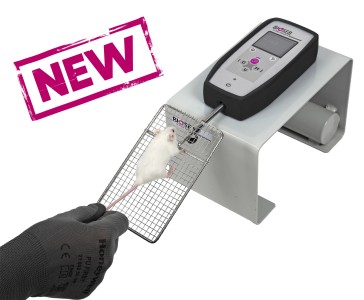Authors
M. Dudra-Jastrzebska, M. M. Andres-Mach, N. Ratnaraj, P. N. Patsalos, S. J. Czuczwar.
Lab
Medical University, Department of Pathophysiology, and Institute of Agricultural Medicine, Department of Physiopathology, Lublin, Poland.
Journal
Seizure
Abstract
This study was designed so as to characterize the interactions between levetiracetam (LEV) and the conventional antiepileptic drugs (AEDs) clonazepam (CZP), ethosuximide (ETS), phenobarbital (PB), and valproate (VPA) in suppressing pentylenetetrazole (PTZ)-induced clonic seizures in mice by use of type II isobolographic analysis. Adverse-effect profiles of the drugs in combination were determined and brain AED concentrations were measured. The combinations of VPA and ETS with LEV at the fixed-ratio of 1:2, CZP with LEV (1:20,000), and PB with LEV (1:20) were supra-additive (synergistic) in suppressing seizures. In contrast, VPA and ETS with LEV (1:1, 2:1, and 4:1), CZP with LEV (1:1000, 1:5000, and 1:10,000), and PB with LEV (1:1, 1:5, and 1:10) were additive. No adverse effects were observed. ETS significantly reduced brain LEV concentrations but no other pharmacokinetic changes were observed. The combinations of CZP with LEV (1:20,000); VPA and ETS with LEV (1:2); and PB with LEV (1:20) appear to be favorable combinations exerting supra-additive interactions in suppressing PTZ-induced seizures.
BIOSEB Instruments Used
Grip strength test (BIO-GS3)
Source :
http://www.sciencedirect.com/science/article/pii/S1059131109001356

 Pain - Thermal Allodynia / Hyperalgesia
Pain - Thermal Allodynia / Hyperalgesia Pain - Spontaneous Pain - Postural Deficit
Pain - Spontaneous Pain - Postural Deficit Pain - Mechanical Allodynia / Hyperalgesia
Pain - Mechanical Allodynia / Hyperalgesia Learning/Memory - Attention - Addiction
Learning/Memory - Attention - Addiction Physiology & Respiratory Research
Physiology & Respiratory Research











![Dynamic Weight Bearing 2.0 – Postural Module [Add-on]](https://bioseb.com/733-home_default/dynamic-weight-bearing-20-add-on-postural-module.jpg)
























 Pain
Pain Central Nervous System (CNS)
Central Nervous System (CNS) Neurodegeneration
Neurodegeneration Sensory system
Sensory system Motor control
Motor control Mood Disorders
Mood Disorders Other disorders
Other disorders Muscular system
Muscular system Joints
Joints Metabolism
Metabolism Cross-disciplinary subjects
Cross-disciplinary subjects CONFERENCES & MEETINGS
CONFERENCES & MEETINGS 